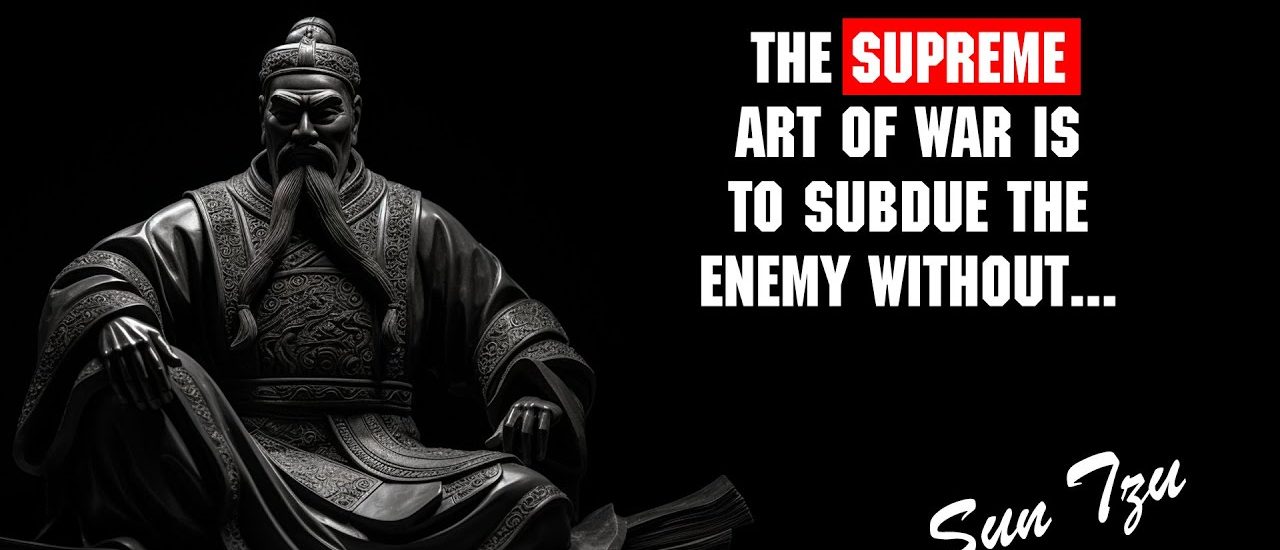“Sun Tzu’s Art of War,” also known as “Sun Wu’s Art of War” or “The Art of War by Master Sun,” consists of 13 chapters, with the first six focusing on strategic issues and the subsequent seven emphasizing specific tactics, spanning approximately 6,000 characters. Compiled around the transition period between the Spring and Autumn and Warring States periods, over 2,500 years ago, it stands as one of the oldest military treatises in existence, forming the earliest systematic framework of strategy and tactics in the history of military theory. Since its inception, this book has significantly influenced the development of ancient Chinese military thought and theory, revered as the ‘pioneer of Eastern military studies,’ the ‘world’s oldest military treatise,’ the ‘classic of military strategies,’ and holds the honorific title of ‘the bible of military theory.’
A succinct overview of “Sun Tzu’s Art of War”:
- “The Calculations” elaborates on the importance of strategizing both before and during warfare and underscores the significance of planning in war.
- “Waging War” emphasizes the criticality of swift and decisive victories.
- “Attack by Stratagem” focuses on employing strategies to conquer the enemy.
- “Disposition of the Army” stresses the need to create conditions where victory is assured before engaging in battle.
- “Energy” expounds on creating overwhelming momentum in battle and utilizing it to defeat the enemy.
- “Weaknesses and Strengths” advocates for employing strategies that involve avoiding the enemy’s strengths and attacking their weaknesses.
- “Military Maneuvers” discusses seizing advantageous conditions to maintain the initiative in combat.
- “The Nine Variations” elucidates the need for commanders to flexibly adapt to various circumstances in warfare and outlines expectations for leadership.
- “Marching Order” delves into arranging and assessing troops during marches and discerning enemy situations across different terrains.
- “Terrain” discusses leveraging geographical advantages in warfare, particularly the benefits of deep incursions into enemy territory.
- “Nine Situations” discusses strategic considerations in attacking different battlefield terrains, the “nine grounds.”
- “Fire Attack” details the use of fire as a tactic in warfare, including methods, conditions, and principles.
- “Employment of Spies” emphasizes the critical importance of espionage in gathering intelligence during warfare, detailing spy types and methodologies.
Sun Tzu’s military theories encapsulate several key points:
- On the matter of war, “The Art of War” emphasizes the core doctrine of “cautious warfare” and “valuing warfare.” It stresses the critical importance of war to a nation’s destiny and its intimate connection to life and death, urging careful consideration and high regard.
- Strategically, it proposes the strategy of achieving “complete victory without fighting,” seeking to secure maximum victory at minimal cost. This approach aims to compel the adversary to yield without direct conflict.
- In terms of military governance, it advocates for a principle of “governing troops through culture, organizing them through martial skills,” combining political education, stringent discipline, and morale encouragement to foster a united force fighting for the nation’s cause.
Furthermore, “The Art of War” embodies rich philosophical connotations:
- It embraces a pragmatic materialistic outlook, rejecting superstition and fatalism. Sun Tzu firmly separates discussions of warfare from supernatural influences, emphasizing human agency in determining outcomes.
- It embodies a simple dialectical approach, acknowledging contradictions that can transform into one another. It encourages active efforts to manipulate conditions and recognizes the interplay between appearance and reality, urging a thorough understanding of an adversary’s true nature.
- It manifests an acute awareness of specific contextual analysis, stressing the need for adaptability in rapidly changing military situations.
In sum, “The Art of War” stands as a luminous gem in the legacy of Chinese military studies, transmitted and extolled across dynasties and widely disseminated abroad, finding relevance and application in commercial competition, corporate management, sports competition, diplomatic negotiations, and various other societal activities.

